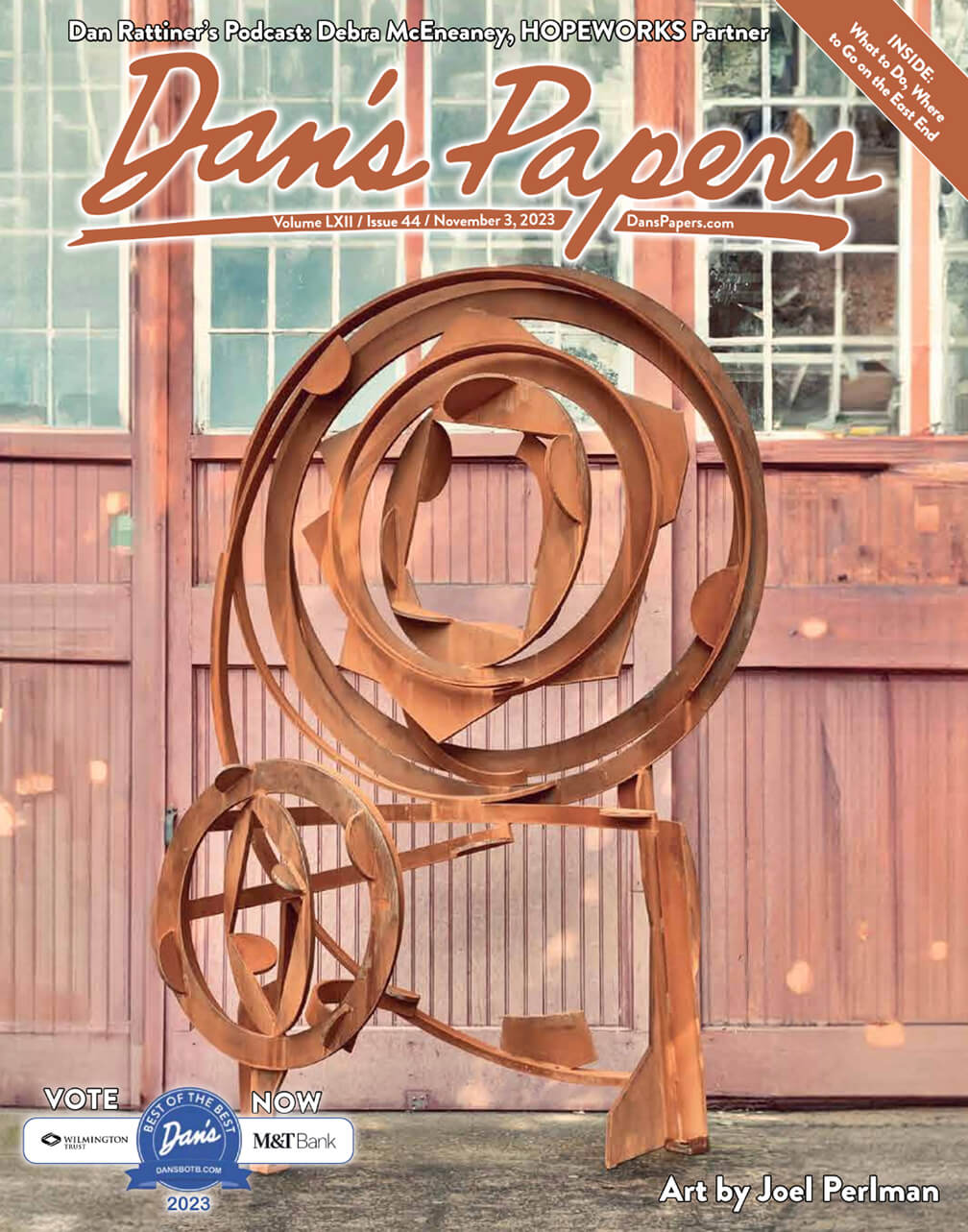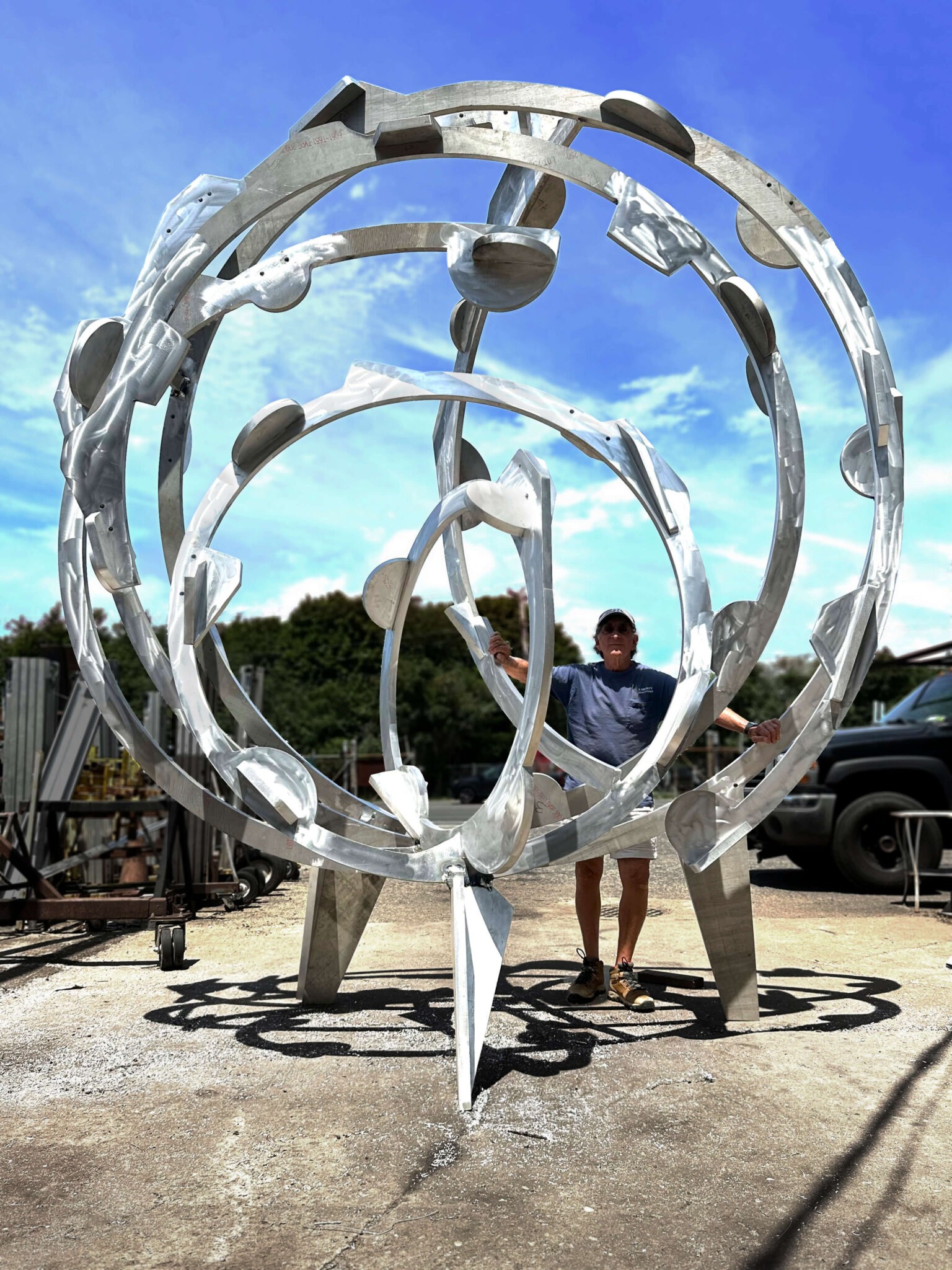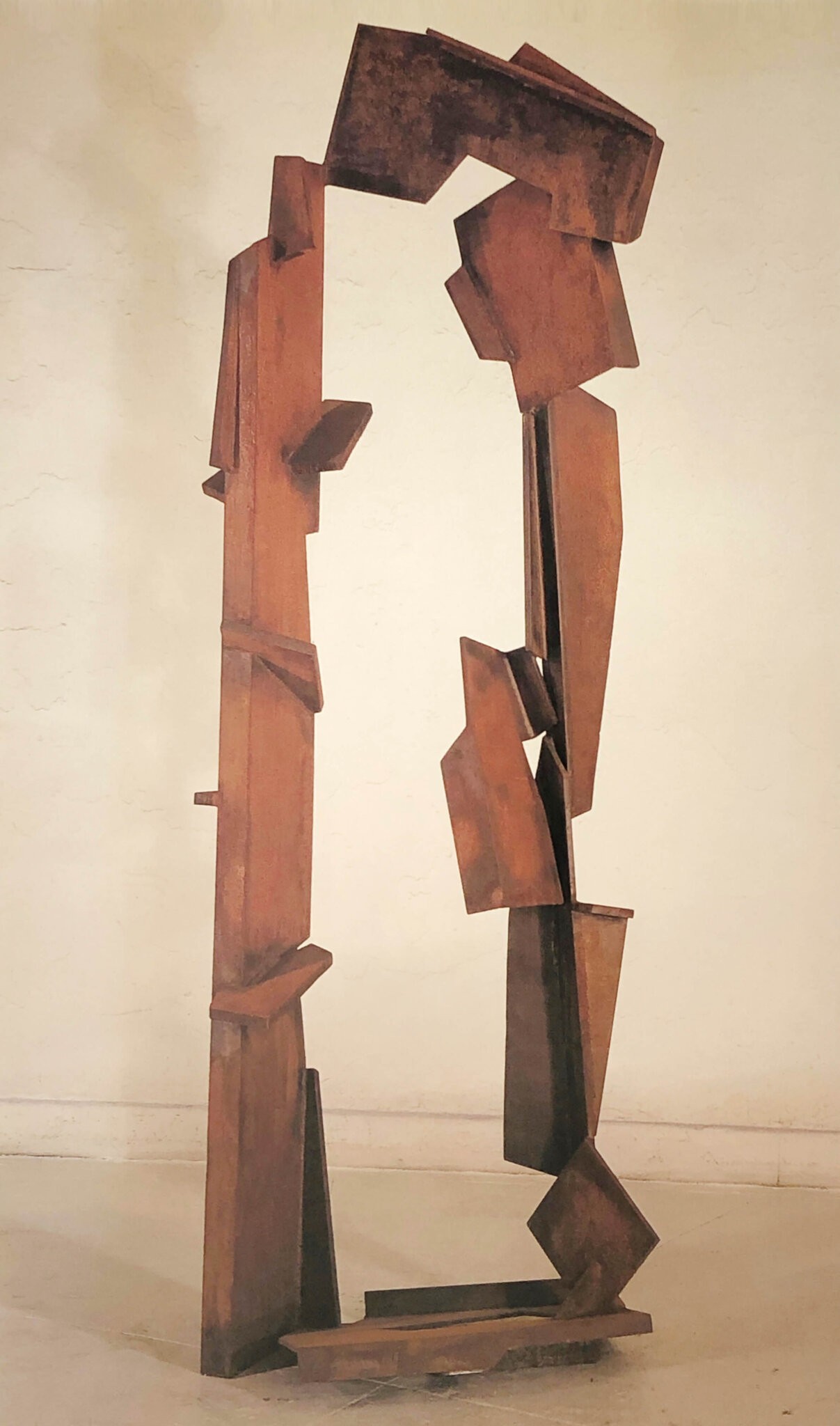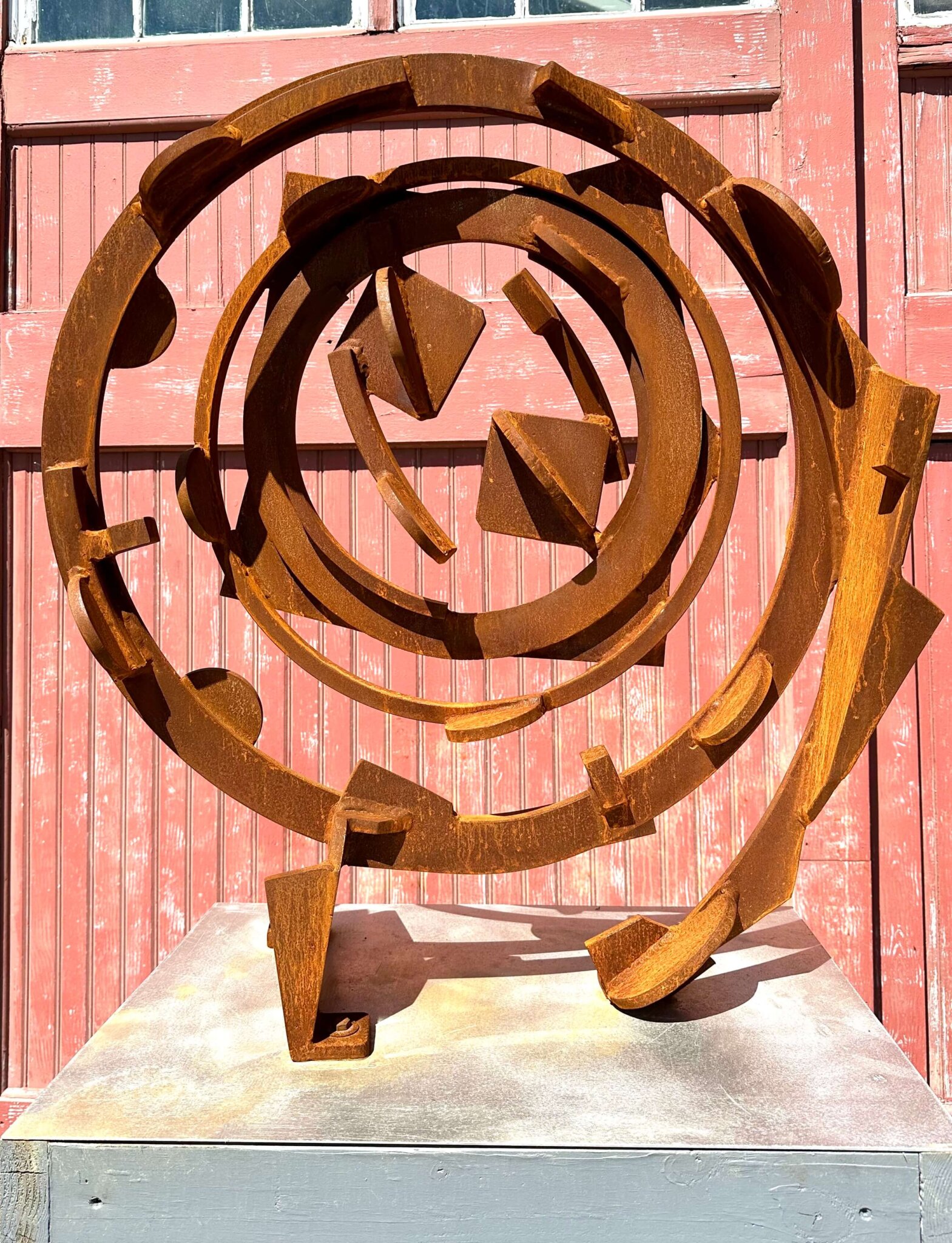Dan’s Cover Artist Joel Perlman Talks Sculpture, Commissions & More

This week’s cover of Dan’s Papers features a sculpture by renowned Water Mill sculptor Joel Perlman. Here, he discusses the creation of his “Big Round II” cover sculpture, his favorite metals to sculpt with and his latest project debuting this winter.

A Chat with Joel Perlman
What did the inspiration and design process entail to envision the sculpture featured on the cover, and how did you select its title?
I am interested in anything mechanical — motors, gears, construction sites. Anything that goes fast, motorcycles and cars, any kind of engine, farm machinery, the industrial revolution fascinates me. “Big Round II” looks like it has a function; but its only function is to be there. The titles are usually descriptive, as I want the viewer to interpret for themself.
What did the physical creation process of the cover sculpture entail, and how long does this process typically take to complete?
I usually wing it. I don’t know what I am going to do until I am doing it. I have a big pile of shapes and just start moving them around with my two overhead cranes. I weld them together. I break them apart. It is trial and error or just my intuition. Eventually I get something, leave it for a bit and then come back to it and make it better.
The only exception would be when I do a large site-specific commission. The collector or architect might need a clue. Even then the work changes a lot as it is scaled up. A small piece may take a week or two and a large piece can take several months.

Do you have a favorite type of metal or other material to create outdoor sculptures with, and is your preference different for indoor sculptures?
I like all types of metal as they each have special properties. For the large pieces, like “Big Round II” I use mild steel, which has great weight and strength and oxidizes to a rich brown patina. Welding is easy; figuring out what to do is hard. I also use stainless steel for a muted reflective finish or aluminum when there is a weight issue.
For indoor sculptures, I created pieces in Styrofoam insulation sheets and then cast them in bronze — the “lost Styrofoam method.” It is very industrial and very direct. While I like all metal to look like what it is, what David Smith called “truth to materials” patina can enhance the bronze.
How do you define your signature sculpture style?
I don’t think of it as a style. It is more an extension of myself. I hope the viewer gets something of me when they look at the work. I guess you would call me an abstract metal sculptor, but I don’t think definitions of style fit in cubby holes very well.
What do you consider the greatest accomplishment or accolade of your career so far?
I have been a full-time sculptor for more than 50 years, had lots of support, and never had anyone tell me what to do. The commissions, the many gallery and museum shows, the awards are all very gratifying, but it is the respect of my peers that I value most. I have also been a teacher at the School of Visual Arts for more than 50 years, and giving back to the system I came from feels really good.

What do you find most personally rewarding about being a sculptor?
Being a sculptor out here in Water Mill is personally rewarding. The light, the landscape, the beach have all changed my work. Being in a less hectic environment — we moved out from NYC full-time during the pandemic — has given me a clearer focus and long periods to just work. I have a great support team here. James Greco, an excellent artist in his own right, helps me in the studio. John Degen at Liberty Iron is my guru and great friend. I probably would not still be going strong without him.
Would you like to share any closing thoughts or news of other projects you’re working on?
My most recent project is “Texas Turbine,” a site-specific commission for The Primera Companies in Plano, Texas. It is a 12′ x 12′ aluminum work completed at Liberty Iron and due to be installed this winter.
To see more of Joel Perlman’s sculpture work, visit joelperlman.com.



